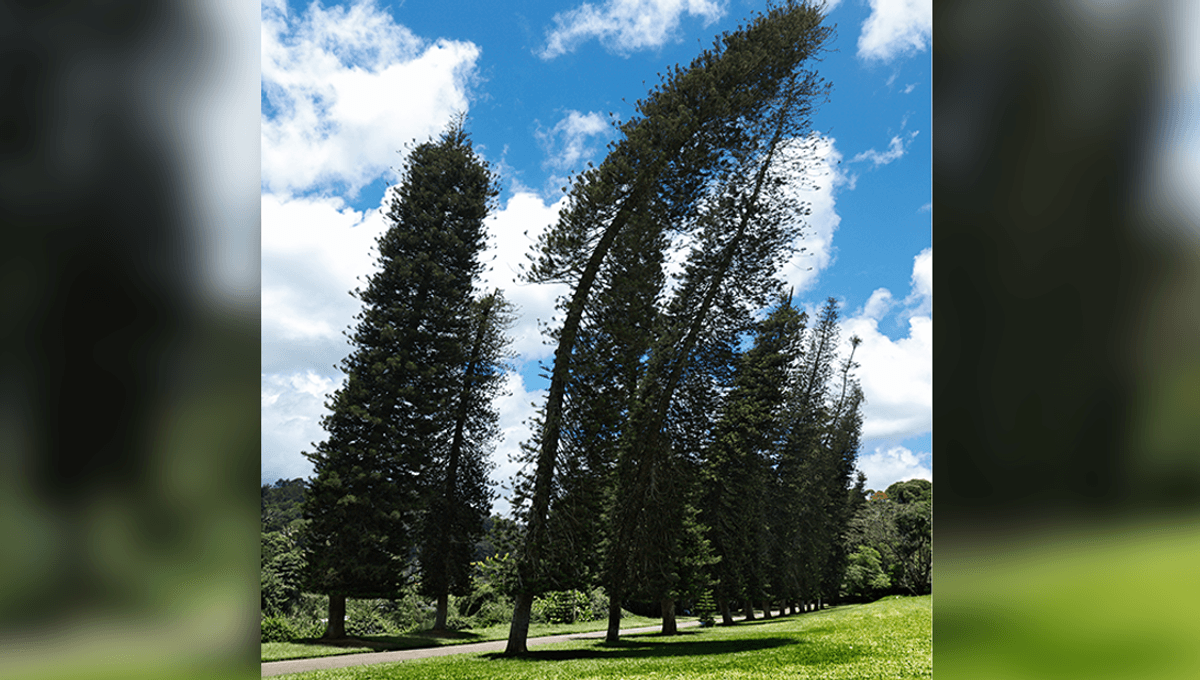
A few years ago, a group of researchers made a strange discovery: No matter where they are on Earth, Cook pine trees lean toward the equator.
Cook pines (Araucaria columnaris) have a distinct lean to them. In fact, according to the researchers that discovered the equatorial lean, “when grown outside of its native range, this species has a pronounced lean so ubiquitous that it is often used as the identifying characteristic for the species.”
Matt Ritter, now director at Cal Poly Plant Conservatory, was writing about the pines for a book when he noticed that the trees he had studied all seemed to lean to the south, New Scientist reported. Ritter began ringing colleagues around the world to see which way their cook pines were leaning, and soon found that they all seemed to be leaning toward the equator.
Ritter and his team measured 256 trees across five continents on a range of latitudes to examine the phenomenon further.
“We demonstrate that the Cook pines’ lean is non-random: trees in the Northern Hemisphere lean south, and those in the Southern Hemisphere lean north,” the team wrote in their study. “Additionally, the magnitude of the lean is more pronounced at higher latitudes in both hemispheres.”
On average, the trees lean 8.05 degrees toward the equator, but the leans were more pronounced further away from the equator, and only 9 percent of trees moved away from the predicted direction.
Usually, trees grow vertically in response to the opposing influences of gravity (gravitropism) and light (phototropism).
“The leading hypothesis for the molecular mechanism of gravitropism is that sedimentation of amyloplasts on actin microfilaments activates a signal transduction pathway resulting in asymmetric transport of auxin in the stem, causing it to straighten itself parallel with the gravity vector,” the study authors write.
In more competitive or challenging environments, trees may grow in other directions, as they grow toward the available light. While young plants may grow toward the Sun, however, they tend to correct themselves as they grow due to the influence of gravity. It’s not clear why cook pines have their distinctive lean, though the team suggests it could be an unhelpful, non-adaptive quirk of their genetics or something else.
“The mechanisms underlying directional lean of Araucaria columnaris may be related to an adaptive tropic response to the incidence angles of annual sunlight, gravity, magnetism, or any combination of these,” the team concludes.
“It is interesting that the pronounced lean in A. columnaris is rare in other species, including other Araucaria native to New Caledonia. It is possible that the biophysical constraints of leaning for a tall tree ultimately prevail over any benefits of additional light interception gained by leaning.”
The team adds that the phenomenon needs more study, as the “plants are responding to their global environment in a way not yet fully understood.”
The study is published in Ecology.
Source Link: No Matter Where They Are On Earth, These Trees Lean Toward The Equator